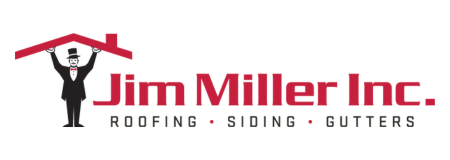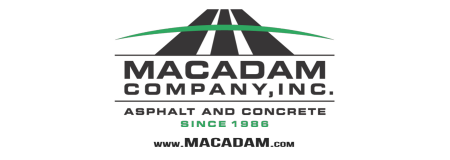Preparing Your Roofing System For Winter
Anne Yannarella | National Contractors, Inc.
Winter’s cold and snowy weather is right around the corner, and now is the perfect time to think about your winter home maintenance checklist. A comprehensive winterization plan should include your roofing system, which provides the first line of defense between your family and harsh weather.
Use these tips to ensure your roofing system is ready for the season:
Check the roof.
While some damage may be visible from ground level, the best way to check for roof damage is to get onto the roof and inspect it for any weak spots, rot, loose, or missing shingles that may result in leaks from melting snow. Keep in mind that walking on any roof should be kept to a minimum and performed by a professional to prevent shingles or tiles’ damage. Did you know that algae or fungus may take root beneath the shingles? In freezing temperatures, algae may expand and expose roofing materials to the elements. Any visible signs of damage indicate you need to work on your roof before winter to avoid significant repairs later.
Flat roofs.
A flat roof inspection will include looking for ponding water (which may indicate poor drainage or an inefficient slope), deteriorating seals and seams, punctures, and cracks. Clear any debris buildup that often leads to clogged drains and standing water. Remove leaves that can hold moisture.
Check your attic.
Many people ignore their attic as an area that needs to be inspected to winterize your roof.
Does your attic have proper ventilation?
If not, your attic may develop condensation, mold, and mildew, which is harmful to your health and home. It will also cause roof shingle, sheathing, and siding decay. Blistering or peeling outside paint may be caused by excessive moisture or high humidity due to poor attic ventilation. Correct attic ventilation consists of a balance between air intake at the eaves or soffits and air exhaust at or near your roof ridge.
Do you have adequate insulation?
It’s essential that insulation covers the eaves, but not the vents, which would block ventilation. By adding insulation to your attic, you will protect your roofing system, keep your home warmer in the winter (and cool in the summer), and save money on heating costs.
Check caulking and flashings to ensure the continued performance of your roofing seals.
Seepage in the attic after a driving rain may be caused by inadequate shingle underlayment or deteriorated flashing.
Check the seals around your roof vents and chimney.
Over time, the elements may cause them to crack or erode.
Stop ice dams from forming.
Ice dams form when there is snow on the roof, and indoor heating rises through the ceiling into the attic and warms the roof surface, except at the eaves. Snow on the heated portion of the roof melts and flows down until it meets the section of the roof below freezing. At that point, the water accumulates at the eaves and freezes into an ice dam. Further melting snow will back up behind the ice dam preventing it from draining and, as it lies on the roof, will work its way under the roof covering and flow into the attic. From there, it can leak into your home through insulation, ceilings, walls, and other areas causing soggy insulation, sagging and stained ceilings, peeling paint, and warped floors. Taking these preventative measures is the best way to keep ice dams from forming and maintain proper conditions on the roof deck:
- Maintaining a consistent attic temperature.
- Increasing ventilation with ridge and soffit vents.
- Adding the recommended amount of insulation.
- Covering your attic hatch.
- Exhaust to the outside through your roof or walls, never through a soffit.
- Proper flashing around your chimney.
- Seal and insulate ducts.
Clear gutters.
Most of us think about cleaning gutters in the autumn when leaves are falling. Remember to clean your gutters of all debris so melted snow will drain properly and not damage your roof and home. If you have asphalt shingles, do you see any particles in your gutters? Before the first snowfall, an essential step is to make sure your downspouts are guided away from your home to prevent leaks and flooding.
Trim tree limbs.
Prevent the severe damage caused by branches breaking off and falling on your roof by trimming any branches or any dead tree limbs hanging over and threatening your roof ahead of winter.
Pest control.
This element should also be included in your roof maintenance plan. Did you know that insects and small animals such as squirrels and birds can damage your roof and attic? Look for signs of gnawing on the wood, insulation, or wires as well as any nests and droppings.
Inspect your ceilings.
Often overlooked, you should inspect the ceilings in your home for interior damage. A water stain, wet spot, or mold and mildew may indicate inadequate or faulty shingle underlayment allowing leakage or inadequate ventilation.
Preventative maintenance extends your roofing system’s life, may prolong the manufacturer’s warranty, and improve your home’s efficiency.
Being well prepared for winter’s harsh weather conditions will minimize damage and costly repairs. To learn more about winterizing your roofing system, schedule a professional roof inspection today.
About National Contractors, INC.
For nearly 30 years, our family-owned business has been providing our customers with unparalleled quality and craftsmanship, exceptional customer service, and guaranteed satisfaction. National Contractors has been a member of Community Associations Institute for 19 years. National Contractors, Inc. proudly serves New Jersey, Pennsylvania, Delaware and Maryland. www.NationalContractors.net.
Contact Anne
Anne Yannarella
Director of Marketing | Business Development
CAI Educated Business Partner
National Contractors, Inc.
Direct: 215.872.4362




















